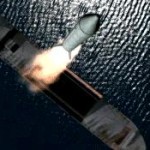Amb. Henry F. Cooper, Chairman . . . Lt. Gen. Daniel Graham, Founder
High Frontier . . Building Truly Effective Defenses . . Reagan’s Vision Lives!
E-Mail Message 130628
Some Good News in S.1197
By Ambassador Henry F. Cooper
June 28, 2013
The Independent Working Group (IWG) held an important meeting on Capitol Hill this week—and among mostly bad news about matters of interest to our national security, we learned something quite positive. So, this week, I’ll begin with the good news and end by discussing briefly a couple problematic issues.
The Good News.
On the margins of this IWG meeting, I learned that the Senate Armed Services Committee (SASC) recently included several very important provisions in its recommended National Defense Authorization Act (NDAA) for FY 2014—S.1197. This recommended Act will next be considered by the full Senate; and, after possible amendments, the approved version will be taken into a conference with the House’s version of the NDAA (H.R.1960), linked here. Although we probably won’t know for sure that the SASC’s proposed language will survive this gauntlet until sometime in late Summer or this Fall.
The full SASC NDAA (S.1197), linked here, contains in Title IIC (Sections 231-236) items of interest to the Ballistic Missile Defense (BMD) community. You can follow the above link for the full list—the following emphasizes that the Act would direct the Secretary of Defense to provide a report on future options for defending the U.S. homeland, including:
- An assessment of the Ballistic missile threat from North Korea and Iran through 2022 and the effectiveness of our current and planned Ballistic Missile Defense (BMD) systems against that threat, including improvements that could result from additional ground based interceptors and sensors, additional ground based BMD sites, enhancements in operations effectiveness, and most notably:
- “[T]he potential for future enhancement and deployment of the[Navy’s] Standard Missile-3 Block IIA interceptor to augment United States homeland ballistic missile defense; missile defense options to defend the United States homeland against ballistic missiles that could be launched from vessels on the seas around the United States, including the Gulf of Mexico, or other ballistic missile threats that could approach the United States from the south, should such a threat arise in the future;” and
- “[A]ny other options the Secretary considers appropriate.”
For each of these options, S.1197 directs that SecDef evaluate the advantages and disadvantages, including considerations of technical feasibility; operational effectiveness and utility against the projected future threat; cost, cost effectiveness, and affordability; and agility to respond to changes in future threat evolution.
Hopefully, these provisions will be included in the final version of the NDAA from the House-Senate joint committee later this summer and SecDef’s threat analysis will include the concerns we have raised over the past six months about ballistic missiles that might be launched from vessels off our coasts—and particularly from the Gulf of Mexico. The second bullet above should assure that our suggestion for deploying “Aegis Ashore” on military bases around the Gulf of Mexico is considered among the counters to the threat from vessels off our coasts. The last sentence of the second bullet opens the door for considering the threat of a satellite-borne nuclear weapon that could be launched by North Korea or Iran over the South Pole to approach the U.S. from the South. Aegis at Sea can help counter that threat.
If the full Senate accepts this language in the upcoming floor debate, then I would expect the House to concur in the final NDAA, later this summer—all that would remain to start the 180-day clock on SecDef’s report to congress would be President Obama’s signature on the Act. Hopefully, this will happen and we will have time for the Missile Defense Agency (MDA) to build effective BMD systems before they are needed to counter, in our opinion, clear threats that could release a high altitude electromagnetic (EMP), potentially leading to the death of several hundred million Americans.
There are also a number of other positive missile defense actions in the House and SASC versions of the NDAA, including funding for a radar based in the northeastern U.S. that could significantly improve our ability to defend against Iranian intercontinental ballistic missiles (ICBMs) including by enabling Aegis BMD ships that may be operating near our east coast—or even in port, e.g., in Norfolk, if their crews are prepared to deal with that possible threat. The House version also calls for plans for three additional ground-based sites and funding to begin advance work for at least one of them.
The Bad News.
The bad news is that overall funding constraints are likely to limit the MDA’s ability to execute quickly these positive initiatives, especially when the effects of the Sequester are likely to actually cut the overall MDA budget when additional funding is needed just to sustain the on-going approved programs.
And there are other issues—such as the lack of funding for a needed space-based sensor program, even though recent testing has demonstrated that a viable system could provide significant improvements, especially in defeating the advanced offensive countermeasures that the Russians have been bragging about. And there is nothing apparently planned for efforts to revive a serious space-based defense program, to build the most effective defenses developed during the SDI era (1983-92).
Bottom Line.
So, the bottom line is that things are looking up for getting a plan to defend against the “manmade” EMP threat, but we may not have the money to build rapidly that defense and continue other important approved programs. Mapping the way ahead will be a difficult bureaucratic MDA challenge even if it determines there is a clear technical path for setting the priorities to deal with the growing threat.
What to do?
In any case, we at High Frontier will continue to inform the powers that be of the existential EMP threat, and hopefully, key federal authorities and members of congress will soon begin to deal effectively with it. With all the bad news from the Middle East, we may need an effective defense relatively soon.
By the way, I have not mentioned the “natural” EMP threat that missile defenses cannot counter. It would come from massive solar emissions of gamma rays that could interact with the earth’s geomagnetic field to produce an EMP that could shut down the electric power grid, indefinitely—returning our electronic based society to the 19th century way of life without the 19th century means for survival. Little if anything is being done to deal with this problem—so far, except for Maine and their efforts to harden their portion of the grid.
Hopefully, the Shield Act, tabled by Rep. Trent Franks (R-AZ) last week with by partisan co-sponsors—will fare better in the current congress than in the last. Stay tuned—and pray that a massive solar emission does not occur during the latter stage of the current solar maximum, which continues through 2013.
And what can you do?
Join us at High Frontier in seeking to alert the public and your local and state authorities to the existential threats posed by both man-made and natural EMP events—and what can be done about these threats.
We can use your help in spreading this information to the grass roots and to encourage all “powers that be” to provide for the common defense as they are sworn to do. Will you do your part?
Begin by passing this message to your friends and suggest they visit our webpage, www.highfrontier.org for more information. Also, please encourage your sphere of influence to sign up for our weekly e-newsletter!
Please click here to read Past Weekly Udpates!
Please click here to read past Flash Messages!
Please help High Frontier continue this important and timely work!
Be sure to follow us on our Social Sites!
If you found this letter via our Social Sites, and you would like to subscribe, click below!






